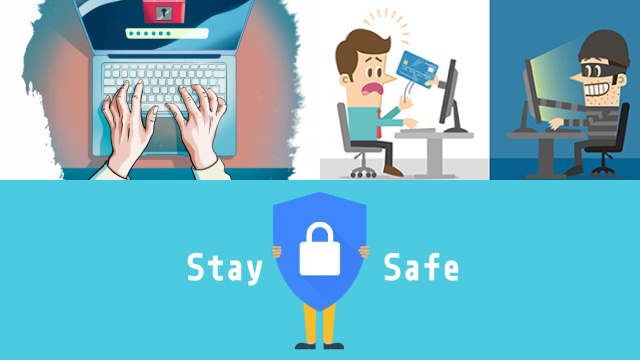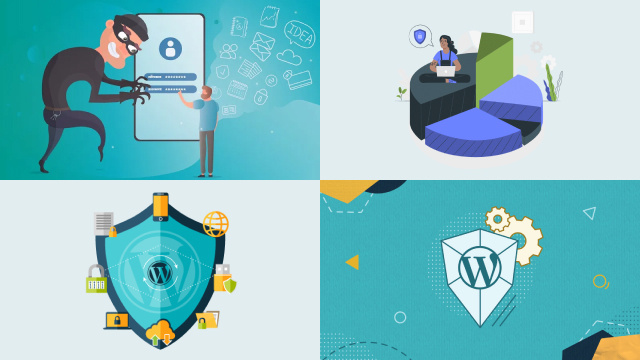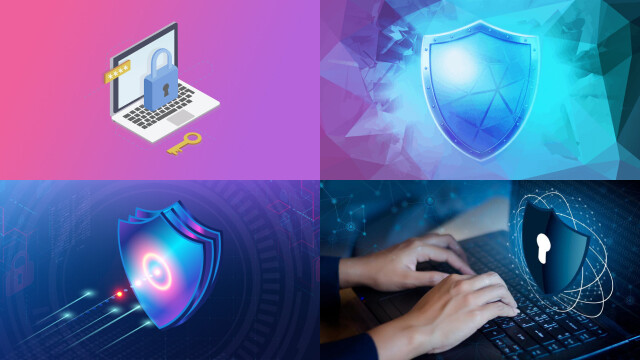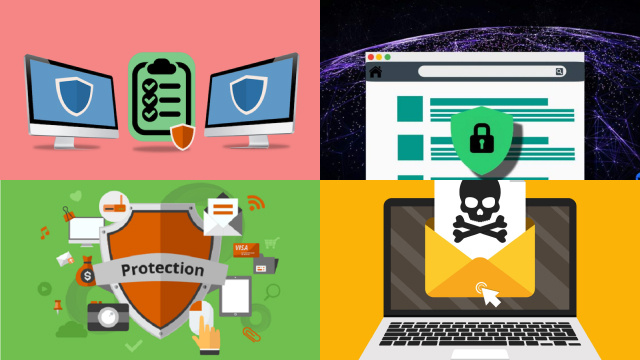Safeguarding Your Digital Footprint: How to Stay Safe Online
In today’s interconnected world, safeguarding your digital footprint is crucial to ensuring your online safety. With the rise of cyber threats, it’s essential to adopt proactive measures and protect your personal information. Firstly, use strong and unique passwords for each of your online accounts. Incorporate a combination of letters, numbers, and special characters to enhance their complexity. Secondly, enable two-factor authentication (2FA) whenever possible to add an extra layer of security. This requires an additional verification step, such as a unique code sent to your mobile device.
Thirdly, be cautious of the information you share online, both on social media platforms and other websites. Limit the personal details you disclose and adjust privacy settings to control who can access your information. Additionally, keep your devices and software up to date with the latest security patches and updates. Regularly install antivirus and anti-malware software to protect against potential threats. Lastly, be mindful of phishing scams and suspicious emails. Avoid clicking on unknown links or downloading attachments from unverified sources. By implementing these practices and staying vigilant, you can safeguard your digital footprint and navigate the online world with confidence.
Protecting Your Privacy: Essential Tips for Online Safety
In the digital age, protecting your privacy has become paramount to maintaining online safety. To safeguard your personal information, there are essential tips you should follow. Firstly, review and adjust your privacy settings on social media platforms and other online accounts. Limit the amount of personal information you share and ensure that only trusted individuals have access to your data. Secondly, be cautious about the websites you visit and the links you click on. Stick to secure and reputable websites, and avoid suspicious links or pop-up ads that could potentially lead to malware or phishing attempts. Thirdly, consider using privacy-enhancing browser extensions or plugins that block tracking cookies and prevent data collection by third parties. Additionally, regularly update your devices, software, and apps to ensure they have the latest security patches and protections. Lastly, be mindful of the information you provide when signing up for online services or making purchases. Read privacy policies and terms of service to understand how your data will be handled and stored. By implementing these essential tips, you can protect your privacy and enhance your overall online safety.
Building a Strong Defense: Best Practices for Ensuring Online Security
Building a strong defense is paramount in ensuring online security. By adopting best practices, you can protect yourself against cyber threats and safeguard your sensitive information. Firstly, use robust and unique passwords for each of your online accounts. Avoid common phrases or easily guessable information and consider using password managers to securely store your passwords. Secondly, enable two-factor authentication (2FA) whenever available. This adds an extra layer of security by requiring a secondary verification step, such as a unique code sent to your mobile device. Thirdly, stay vigilant against phishing attacks.
Be cautious of suspicious emails, messages, or links that could lead to malicious websites or downloads. Educate yourself on the common signs of phishing attempts and always verify the legitimacy of the sender. Additionally, regularly update your devices, operating systems, and applications to ensure you have the latest security patches. Finally, invest in reputable antivirus and anti-malware software to protect against viruses, malware, and other online threats. By following these best practices and remaining proactive, you can significantly strengthen your defense and enhance your online security.
The Art of Password Protection: Creating and Managing Strong Passwords
In the digital realm, mastering the art of password protection is essential to safeguard your online accounts. Creating and managing strong passwords is the cornerstone of your defense against cyber threats. Firstly, ensure your passwords are lengthy, typically consisting of at least 12 characters. Incorporate a mix of uppercase and lowercase letters, numbers, and special characters to enhance complexity. Avoid using easily guessable information such as birthdates or sequential patterns. Secondly, refrain from reusing passwords across different accounts. Each account should have a unique password to mitigate the impact of a potential breach. Consider using a password manager to securely store and generate complex passwords. Thirdly, regularly update your passwords. Set reminders to change them every few months or if you suspect any compromise. Additionally, enable multi-factor authentication (MFA) whenever available. This adds an extra layer of security, requiring an additional verification step beyond the password. By diligently practicing these password protection techniques, you can significantly fortify your online security and reduce the risk of unauthorized access to your accounts.
In the vast digital landscape, it’s crucial to navigate the online world with caution and employ strategies for safe browsing. By adopting these strategies, you can protect yourself from malicious threats and ensure a secure online experience. Firstly, use a reputable web browser with built-in security features and regularly update it to the latest version. This ensures you have the latest security patches and protections. Secondly, be cautious of the websites you visit. Stick to reputable and trusted websites, especially when handling sensitive information or making online transactions.
Avoid clicking on suspicious links or pop-up ads that may lead to malware or phishing attempts. Thirdly, consider using browser extensions or plugins that offer additional security layers, such as blocking malicious websites or preventing tracking cookies. Additionally, enable your browser’s privacy settings to limit the information websites can collect about you. Lastly, exercise caution when sharing personal information online and avoid oversharing on social media platforms. By implementing these strategies, you can navigate the digital wilderness safely, minimizing the risks of encountering online threats and protecting your privacy.
Don’t Fall for the Trap: Recognizing and Avoiding Online Scams
In the vast online landscape, it is crucial to be vigilant and avoid falling into the trap of online scams. Recognizing and avoiding these scams is key to protecting yourself and your sensitive information. Firstly, be cautious of unsolicited emails, messages, or calls requesting personal or financial information. Legitimate organizations rarely ask for such details through unsecured channels. Secondly, scrutinize the credibility of websites before making any online transactions. Look for secure connections (https://) and verify the website’s legitimacy by checking for contact information and customer reviews. Thirdly, be wary of deals or offers that seem too good to be true, as they may be attempts to lure you into scams. Trust your instincts and conduct thorough research before making any financial commitments. Additionally, educate yourself about the common types of online scams, such as phishing, pyramid schemes, and fake charity scams. Stay informed about the latest techniques employed by scammers. By staying alert, conducting due diligence, and trusting your instincts, you can protect yourself from online scams and ensure a safer online experience.
Securing Your Personal Data: Safeguarding Information in the Digital Age
In the digital age, securing your personal data is of utmost importance to safeguard your privacy and protect against potential threats. There are several steps you can take to ensure the safety of your information. Firstly, use strong and unique passwords for all your online accounts. Avoid common phrases or easily guessable information and consider using a password manager to securely store your passwords. Secondly, regularly update your devices, operating systems, and applications to ensure you have the latest security patches. This helps protect against vulnerabilities that could be exploited by malicious actors.
Thirdly, encrypt sensitive data, both when it’s in transit and when it’s stored. Encryption adds an extra layer of security by scrambling the information, making it unreadable to unauthorized parties. Additionally, be cautious of the information you share online and limit the data you provide on social media platforms and other websites. Adjust privacy settings to control who can access your information. Lastly, regularly backup your data to a secure location to protect against data loss due to hardware failure or security breaches. By implementing these practices, you can strengthen the security of your personal data and navigate the digital landscape with confidence.
Cultivating a Cyber-Smart Mindset: Promoting Online Safety Habits
Cultivating a cyber-smart mindset is vital in promoting online safety and establishing healthy habits in the digital realm. It starts with fostering awareness and education about the potential risks and threats that exist online. By staying informed about the latest scams, phishing techniques, and security best practices, you can better protect yourself. Develop the habit of regularly updating your devices, software, and applications to ensure they have the latest security patches. Be cautious when sharing personal information online, and think twice before clicking on suspicious links or downloading unknown attachments. Practice good password hygiene by using strong, unique passwords and enabling multi-factor authentication whenever possible. It’s also essential to foster a sense of skepticism and critical thinking when encountering online content. Verify the credibility of sources before trusting or sharing information. By cultivating a cyber-smart mindset, you empower yourself to navigate the digital landscape with confidence, making informed decisions and staying vigilant against potential threats.




